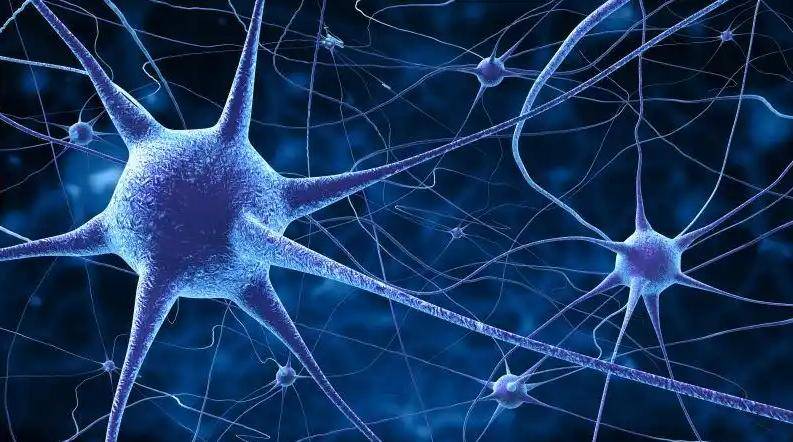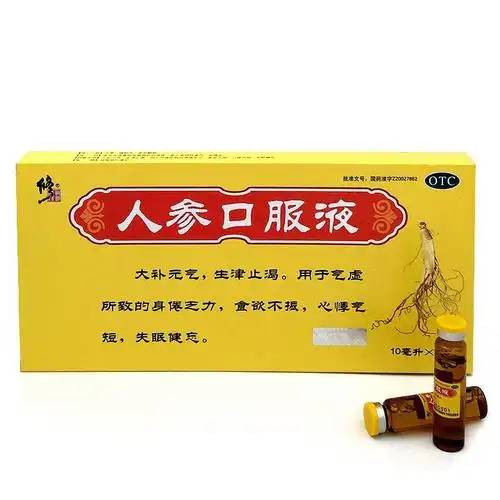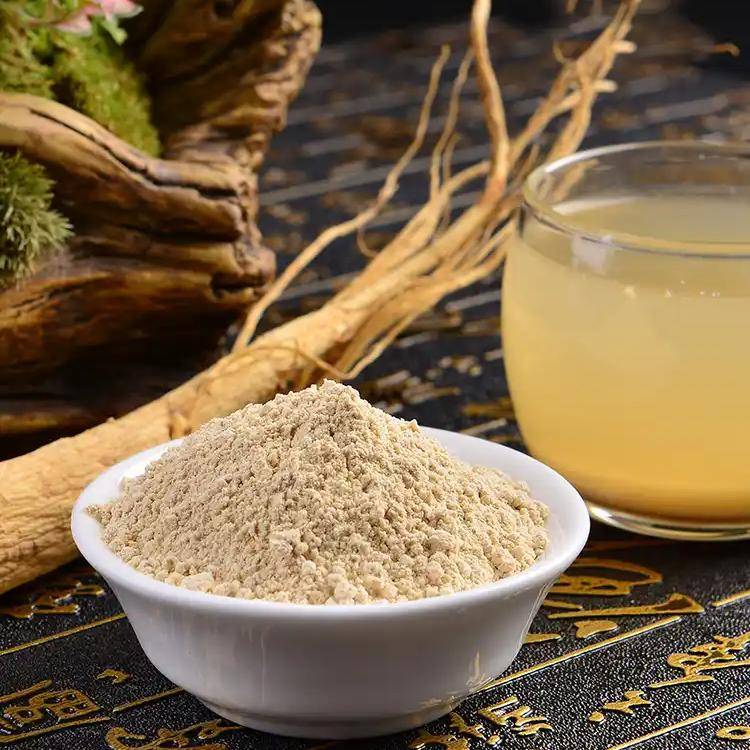인삼추출물 Ginsenoside 항노화에 관한 연구
Aging is a complex biological phenomenon in which various bodily functions gradually decline after the body has matured. There are currently different theories about its mechanism, which can be broadly classified into two categories: traditional Chinese medicine theories on prolonging life and modern theories on aging. Ginseng saponins are the main active ingredients in the medicinal herbs of the Araliaceae family, such as ginseng and American ginseng, and have a wide range of pharmacological effects and medical uses. Studies have shown that ginsenosides have a significant effect on the nervous system, endocrine system, immune system, signal transduction, anti-aging, anti-tumor synergy, etc. [1-3].
사회적 노화의 속도가 빨라지고 현대인의 생활수준이 향상됨에 따라 노화와 항노화에 대한 연구가 의생물학 분야에서 각광받고 있으며, 진세노사이드 '안티에이징 효과 또한 학자들로부터 점점 더 많은 관심을 받고 있다.현대과학기술의 발전, 특히 분자생물학기술을 응용함에 따라 진세노사이드의 항노화메커니즘에 대한 연구는 점차 세포, 분자, 유전자 수준에까지 침투되였다.본 논문은 최근 국내외 학자들의 노화의 메커니즘과 진세노사이드의 항노화 효과에 대한 연구의 진전을 검토한 것이다.이를 통해 인삼약품과 건강관리, 미용제품 개발 및 활용에 대한 이론적 지침을 제공할 것이다.
노화의 메커니즘 1
생명을 연장시키는 한의학 이론 1.1
생명을 연장하는 중국 의학 이론은 인간의 노화나 조기 노화를 이해한 역사가 유구하며, 그 내용도 극히 풍부해 대부분의 학자들이 공인하고 있다.그 중에서 장기의 약화 및 쇠퇴에 대한 이론이 실제적 결과가 더 좋다고 여겨지며, 신장 결핍이 쇠퇴를 유발한다는 이론이 가장 중요하게 여겨지고 있다 [4].쇠퇴를 일으키는 신장결핍은 신장본질 및 오장육부의 양에너지의 고갈과 결핍을 말하는데 오장육부의 혈액, 체액, 조직의 생화학반응에 대한 에너지가 부족하여 많은 노화병리 및 과정을 초래하게 됩니다.신장은 본질을 저장하며 생명의 원천이다.인체의 모든 생리기능을 주관하고 유지하여 통일된 균형을 유지하고 자기조절과 안정성으로 정상적인 활동을 유지할 수 있게 하여 질병으로부터 보호하는 주인이다.신장 본질이 결핍된다는 것은 다섯 가지 내부 장기에 생화학적 작용을 위한 기와 혈액, 체액의 원천이 부족하다는 것을 의미하며, 각종 노화 증상이 점점 뚜렷해진다.
1.2 현대 노화이론 (Modern aging theory)
현대의 연구에 따르면 노화는 체내에서 일어나는 다양한 생화학적 반응의 종합적 발현이며, 신체 내외부의 많은 요인 (환경오염, 정신적 스트레스, 유전 등)이 복합적으로 작용한 결과라고 한다.노화에 대한 많은 현대적 이론들이 있다 (활성산소설, 뇌 노화중추설, 면역기능 저하설 등).자유 라디칼 이론은 1956년 하만에 의해 제안되었으며 [5] 현재 널리 받아들여지는 이론 중 하나이다.이 이론은 체내에서 지속적으로 활성산소가 생성되지만, 동시에 체내의 활성산소를 정상 수준으로 유지하기 위한 효과적인 활성산소 제거 시스템 (superoxide dismutase 등)이 있다고 설명한다.나이가 들면서이 균형이 점차 깨지면서 활성산소가 과다하게 된다.과다한 활성산소는 과산화를 통해 세포막과 미토콘드리아 막과 같은 막구조 및 핵산, 단백질, 효소 등의 생물학적 거대분자를 공격하여 세포막과 미토콘드리아 막에 불포화지방산의 지질과산화와 과산화지질의 생성을 유발한다.이러한 지질과산화물과 그 분해산물은 핵산과 단백질 분자가 교차 연결 및 중합하게하고, 이는 더 나아가 DNA 유전자 돌연변이나 복제 이상을 일으키고 생물학적 효소의 활성도 감소를 일으켜 궁극적으로 세포기능의 심각한 손상, 노화, 사망을 초래한다.

현재 현대 생명공학의 발전, 특히 분자생물학 연구기술의 급속한 발전에 따라 노화에 대한 유전자 프로그램 이론이 점차 확인되고 있다.1990년대 이후 1번, 4번, 7번, X 번 염색체에 각각 노화와 관련된 유전자가 있다는 것이 보고되었다 [6].최근 연구에 따르면 CDI의 두 계열 유전자인 NK4 (P15, P16NK4A, P18, P19포함)와 CIP/KIP (P21, P27, P57포함)는 모두 세포 노화를 유도하는 것과 관련된 유전자라는 것이 밝혀졌다 [7].이러한 연구는 노화가 유전적 요인 [1]에 의해서도 결정된다는 것을 보여준다.최근에는 텔로미어와 텔로머라아제가 발견되면서 유전자 노화 이론이 새롭게 발전했다.텔로미어는 진핵 염색체 말단에 있는 특별한 구조물이다.이들은 짧은 서열 (TTAGGG)n의 2~20kb의 tandem 반복 및 일부 결합 단백질로 구성되어 있다.이들은 염색체 위치, 복제, 세포 성장과 생명의 보호 및 제어 등에 중요한 역할을 한다 [8].DNA 가 복제될 때마다 텔로미어는 50~200 bp씩 줄어든다.어느 정도 짧아지면 세포는 분열을 멈추고 노화하며 죽는다 [9].텔로머라아제는 텔로미어 서열의 복제에 의존하는 특별한 DNA 중합효소이다.자신의 RNA 분자를 템플릿으로 사용하여 3'말단 [10]부터 텔로미어의 길이를 합성하고 연장할 수 있으며, 이를 통해 세포의 노화를 지연시킬 수 있다.
인삼 사포닌과 노화 방지 효과 2
Ginseng saponins are the main active ingredients of the medicinal herbs Panax ginseng and American ginseng. So far, at least 40 ginsenoside monomers have been isolated from the ginseng plant. According to the Rf value of ginsenosides in thin-layer chromatography, they are named from small to large as R0, Ra1, Ra2, Rb1, Rb2, Rb3, Rc, Rd, Re, Rf, Rg1, Rg2, Rh1, etc. [11]. Ginseng saponins can be divided into two types according to the aglycone: the dammarane type and the oleanane type (R0, Rh3) [12]. Among them, the dammarane type saponins are further divided into protoginsenolide and prototriginsenolide types according to the position of the sugar group attached to the aglycone. The representatives are Rb1 and Rg1 [13]. Ginsenosides of the diol and triol types account for the majority of ginsenosides and are considered to be the main active ingredients of ginseng. With the accelerating pace of an ageing society and the improvement of modern living standards, while people are desperately looking for ways to develop natural anti-ageing drugs, the anti-ageing effects of ginsenosides have also attracted the attention of more and more scholars, and research into the mechanism of ginsenosides'노화 방지 효과도 심화되고 있다.
2.1 항산화 효과
정상적인 대사과정에서 생성되는 활성산소는 신체&에 의해 빠르게 제거될 수 있다면 해를 끼치지 않을 것이다#39, s 방어 시스템.만약 이것들을 완전히 제거할수 없다면 생물학적인 대분자를 손상시키고 인체의 노화를 초래하게 된다.기존 결과에 따르면 진세노사이드는 활성산소의 생성을 억제할 뿐만 아니라 활성산소가 조직과 세포에 미치는 해로운 영향과 직접 싸우거나 활성산소를 직접 제거하며 체내 &의 기능을 강화하기도 한다#39;s 자신의 항산화 시스템, 여러 연결에서 활성 산소의 해로운 영향을 차단.장자린 (Zhang Jialin) [14] 등 연구진은 인삼 사포닌 Rb1과 Rg1이 늙은 쥐의 혈액 내 항산화 효소의 활성에 미치는 영향을 연구했다.그들은 그 사실을ginseng saponins Rb1 and Rg1 can significantly increase the activity of superoxide dismutase (SOD) and catalase (CAT), enhance the body's 독성 산소 활성산소에 의한 손상을 방어하는 능력, 노화 방지 효과가 있습니다.
왕홍리 등 15)은 ginsenosides의 피부노화 방지 효과에 관한 실험에서 100 mg/kg·d-1 ginsenosides를 경구 투여하였을 때 D-galactose에 의해 유도된 노화 모델을 가진 생쥐의 피부에 SOD 활성과 hydroxyproline 함량을 유의하게 증가시키고 malondialdehyde (MDA) 함량을 유의하게 감소시키는 것을 발견하였다.CAT 및 glutathione peroxidase (GSH2Px) 활성은 유의적으로 증가되었다.그 기전은 인삼의 주요 활성 화합물인 ginsenol, ginsenoside Rb1 및 Rg1을 포함한 사포닌을 생성하기 위한 ginsenoside의 가수분해일 수 있다.이런 물질은 세포대사를 촉진하고 senescent 피부세포의 핵산과 단백질의 합성을 가속화하며 피부중의 SOD의 함량과 활성을 증가시킬수 있다.또한 강력한 항산화 및 자유 라디칼 소거 효과를 발휘하고 MDA와 같은 지질 과산화 생성물의 침전을 줄이고 세포의 정상적인 생리 기능을 회복하며 피부 섬유 세포의 활동을 자극할 수 있습니다.인삼 사포닌은 또한 콜라겐 합성을 촉진시켜 피부를 젊게하고 이로 인해 피부 노화를 지연시킬 수 있다.Chang [16] 등은 ginsenoside diol이 총 사포닌의 2~3배에 달하는 SOD 및 CAT 유전자 발현을 유도하며, 그 중 ginsenoside Rb2가 가장 효과적임을 밝혀내어 유전자 수준에서 항산화 효소를 조절하는 ginsenoside의 핵심적인 역할을 입증하였다.

장신무 [17] 등은 고지혈증을 가진 쥐에서 진세노사이드 Rb 가 혈중 지질대사에 미치는 영향과 항산화 효과를 연구한 결과, 이를 발견했다ginsenoside RbSOD 활성을 현저히 증가시키고, 지질과산화물 (LPO) 및 대사산물 MDA 수치를 감소시키고, 노화과정을 지연시킬 수 있습니다.정준린 외 18인은 인삼 줄기와 잎 총 사포닌이 피부에 미치는 항노화 효과를 관찰했다.100 mg/kg·d-1인삼 줄기와 잎 총 사포닌은 노화생쥐의 전혈에서 CAT과 GSH2Px의 활성을 유의적으로 증가시키고, 피부조직 균질체에서 SOD의 활성을 유의적으로 증가시키며, MDA의 함량을 감소시킬 수 있음을 확인하였다.50 mg/kg·d-1 및 100 mg/kg·d-1인삼 줄기와 잎 총 사포닌은 모두 노화생쥐의 피부조직 내 hydroxyproline 함량을 증가시킬 수 있으며, 노화모델군과 비교하여 유의적인 차이가 있다.인삼 줄기 및 잎 총 사포닌의 경구투여시 D-galactose-induced mouse 피부에 항노화 효과가 있는 것으로 알려져 있다.
신경계 조절 2.2
The decline in brain memory is one of the early symptoms of aging. Experiments have confirmed that changes in neurotransmitters and their receptors are closely related to the aging of brain function, and the specific manifestation is learning and memory dysfunction [19]. Early studies found that ginsenoside Rb1 can promote the release of neurotransmitters. Xue Jianfei et al. [20] first proved that the mechanism of ginsenoside Rb1 promoting the release of neurotransmitters is related to its upregulation of the phosphorylation level of synaptic proteins, and confirmed that the mechanism of action of Rb1 is through the PKA cell signaling pathway. Cheng et al. [21] believe that acetylcholine (Ach) is an important neurotransmitter in the human brain, and a lack of Ach can lead to damage to learning and memory abilities. Early experiments found that ginsenosides Rg1 and Rb1 can increase the content of Ach in the central nervous system, and it is inferred that this is related to the fact that Rg1 and Rb1 can increase the activity of acetylcholine transferase (ChAT) and inhibit the activity of acetylcholine esterase (AchE).

왕 등 [22]은이 추론을 추가로 확인했다.Zhao [23]와 다른 사람들은 최근 진세노사이드가 노인성 쥐의 해마에서 산화 스트레스를 감소시키고 해마의 plasticity-related proteins을 상승시킴으로써 나이든 쥐의 기억력 저하를 막는다는 사실을 발견했다.천후량 [24]은 진세노사이드 Rb1과 Rg3의 혼합물이 뉴런이 과도한 질산을 생성하는 것을 막아 노화를 지연시킨다고 믿는다.Zhao Haihua [25]는 노화된 쥐의 NBM 뉴런에서 ginsenosides 가 tyrosine kinase (TrkB) mRNA의 발현에 미치는 영향을 조사하였다.그 결과 노화쥐의 NBM 뉴런에서 TrkB mRNA의 발현은 어린쥐에 비해 유의하게 낮았으나 투여군은 노화군에 비해 발현이 증가되어 ginsenosides 가 NBM 뉴런에서 TrkB mRNA의 발현을 촉진함을 알 수 있었다.이 결과는 ginsenosides&의 형태학적 근거를 제공한다#39;뇌 노화 방지 효과.지아지민 등 (19)은 ginsenosides Rg1과 Rb1이 신경의 소성을 증가시키고, 모델 동물에서 해마의 치상회 (dentate gyrus)에서 신경줄기세포의 증식과 분화를 촉진하며, Bcl-2와 항산화 효소의 생성을 증가시켜 노화를 지연시킬 수 있다고 보고 있다.
2.3조절 면역 기능
As we age, the immune organs gradually atrophy, the immune function gradually declines, and the resistance to external pathogens is significantly weakened. This is one of the causes of aging [26]. Moderate regulation of the immune system at the cellular and molecular levels can delay aging. Jiang Biwu [27] and others reported that ginsenosides have a stimulating effect on both humoral and cellular immunity in mice, can enhance the phagocytic function of the reticuloendothelial system, promote antibody formation, increase the content of immunoglobulins in the blood, and can stimulate the transformation function of lymphocytes in the elderly, and increase the synthesis of DNA, RNA and proteins in bone marrow cells.
장야핑 등 28인은 미국 인삼 총사포닌과 진세노사이드가 다양한 면역 조절 효과를 가지고 있으며, 이는 다양한 세포가 다양한 사이토카인을 생성하도록 유도하는 능력과 관련이 있음을 증명했다.이 중 IFN은 body&의 중요한 구성 요소입니다#39;s 면역 조절 네트워크.림프구 내 cGMP의 농도 증가는 세포의 증식에 큰 영향을 미친다.반면 cAMP는 히스톤과 비히스톤의 인산화를 촉진하고 유전자 억압을 완화시키기 때문에 유전자 활성에 조절효과가 있다.세포 내 순환 뉴클레오티드 수준의 변화는 세포 수준에서 면역 기능을 조절하는 기작이다 [29].
2.4세포주기 조절인자와 노화유전자의 발현에 영향을 미친다
세포주기는 세포생명활동의 기본과정이다.세포는 세포주기상의 변화 동안 G1 상-S 상-G2 상-M 상의 순서로 활동한다.G1단계는 세포주기를 시작하는 중요한 단계이다.세포노화는 세포주기의 조절하에 여러 가지 인자가 관여하는 복잡한 생리적, 병리학적 과정이다.유기체 노화의 기본이며, 핵심적인 특징은 세포주기 정지이다.두드러진 특징은 세포가 대사활동을 장기간 유지하지만 G1단계에서 막혀 체세포 분열 반응과 DNA 합성 능력을 상실하고 S 단계로 진입할 수 없다는 것이다.사이클린 (Cyclin)은 주기적으로 발현되는 사이클린 단백질이다.G1단계와 S 단계의 접합부에서 사이클린 의존 키나아제2 (CDK2)와 함께 단백질 키나아제 활성을 발휘하며, [30] G1단계로부터 세포가 S 단계로 진입할 수 있도록 하는 핵심 키나아제 단백질이다.

노화유전자는 생물체에 존재하는 유전자로 노화를 유발하거나 지연시키는 효과를 가지고 있다.생체 내 노화 유전자의 존재는 P15, P16NK4A, P18, P19, P21, P27, P57 등과 같은 많은 연구 [31]에서 발견되고 확인되었다.송수하 등은 ginsenosides 가 인간 배아 폐섬유아세포에 대한 양방향성 조절 효과가 있으며, 고연령의 세포에서 세포 증식을 촉진하고 Cyclin D1 유전자 발현을 조절한다는 것을 발견하였다 [32].
Zhao Zhaohui et al. [33, 34]은 추가적으로 ginsenoside Rg1이 t-butyl hydroperoxide (t-BHP)로 유도된 세포의 노화 억제 효과에 미치는 영향을 연구하였고, P21, Cyclin E 및 CDK2의 발현 수준을 변화시키는 능력과 관련이 있을 것이며, 텔로미어 및 텔로머레이즈와도 관련이 있을 것으로 보았다.Zhao Zhaohui et al. [33] 관측 된 세포를 사용 하여 셀 ultrastructure, 유동 cytometry, 및 β 2-galactosidase cytochemical 착색이다.P21, Cyclin E, CDK2의 단백질 발현을 western blot으로 알아보았다.t-BHP 처리군만 비교하였을 때, Rg1전처리군에서 Cyclin E와 CDK2단백질 발현 수준은 증가한 반면, G1 상 세포의 비율은 유의하게 감소한 것으로 나타나, G1 상과 S 상의 접점에서 ginsenoside Rg1이 Cyclin E와 CDK2의 발현을 상향조절하여 세포가 S 상으로 진입하게 함으로써 세포 노화 억제 효과를 발휘할 수 있음을 시사하였다.진장현 등 [35]은 면역lotting을 이용하여 CDK4, Cyclin D1, P16의 발현을 검출하여 t-BHP로 유도된 WI-38세포에 대한 ginsenoside Rg1의 노화 억제 효과와 세포주기 조절 기전 가능성을 구명하였다.그 결과 Rg1은 세포주기 조절인자의 발현을 변화시킴으로써 t-BHP로 유도된 WI-38세포에 항노화 효과를 발휘할 수 있음을 알 수 있었다.효과 가 있다.

3 전망
노화는 인체의 정상적인 생리과정으로 전신 's multi-functional systems. Delaying aging is currently one of the focuses and difficulties of life science research. Ginseng saponins have obvious anti-aging effects, and research on their anti-aging mechanisms has greatly promoted the understanding of the mechanisms of human aging. At present, research into the anti-aging mechanism of ginsenosides has made great progress, but there are still limitations. For example, research on the relationship between ginsenosides and NO-related signal transduction pathways, DNA damage repair pathways, and the mechanism of ginsenosides delaying aging by extending telomere length and telomerase activity is still not very clear. Therefore, it is necessary to conduct a multi-faceted study on the anti-aging mechanism of ginsenosides at the cellular, molecular, and genetic levels, using appropriate experimental methods, with the help of aging theories, modern scientific research techniques, and literature, experimental, and clinical research. This will provide some theoretical guidance for the development and utilization of ginseng drugs, health care products, and beauty products.
참조:
[1] 퉁광 lee,Roberta M.Johnke, 론 R.Allison,다.인삼의 etal 방사선 방호전위 (J.Mutagene-sis,2005,20(4):237~243.
[2] J ohnHon-키일럼, ka-리펑,Pik-유엔청,.동양인삼 Panax 인삼 C.A.의 etal Proteome마이어와 식별 도구로서의 활용 가능성 [J.Proteomics,2002,2,1123~1130.
[3] 왕옌, 마원경.진세노사이드 (ginsenosides)의 생물학적 영향에 대한 연구 진행.사료산업, 2006, 27(6):5-8.
[4] 황야린.항노화 한의학 연구 [硏究].시간의학, 2007, 18(3):691-693.
[5] 하만 D.노화:자유 라디칼과 라-디케이션 화학 [J]에 근거한 이론.J Gerontol,1956,11:298~300.
[6] Du Lisheng다.노화기전과 노화지연대책 [J.광시한의대학교 논문집 2001, 4(4):108-110.
[7] 나벨 바르디시, 앤드루 j. 아귀레,.등 P16 Ink4a와 P19Arf-P53 경로 모두 마우스에서 췌장선암의 진행을 제약한다 [J].Proc Natl Acad SciUSA.2006,103(15):5947~5952.
[8] 노백 KF와 루스 G.정상 및 악성 조모세포에서 텔로미어와 텔로머라아제 [J.Eur J 암,1997,33(5):7 74~780.
[9] 장준탄.인삼 연구의 고찰과 전망.Acta 제약학 Sinica, 1995, 30(5):406-410.
자오자오후이 천샤오춘 주유니 등 (10)Ginsenoside Rg1은 세포 노화 동안 텔로미어의 길이와 텔로머라아제 활성의 변화를 지연시킨다 [J].중국약리학회지 2005, 21(1):61-66.
[11] 오카자키 H, 타조 F, 오카자키 S., 증가 콜레스테롤 생합성 간에서 ex-누르는 squalene sythase 이상 생쥐에서고 콜레스테롤 혈증 [J].지질 연구 논문집,2006,47,1950~1958.
[12] Y.Liang, S.Zhao., 진세노사이드 생합성의 이해 진행 [J.Plant Biology,2008,10,415~421 쪽.
[13] 김 M.K, Lee B.S J.G에서,다.인삼잎 [J]의 cardiac sequence tags(ESTs)에 대한 etal 비교분석-식물세포보고서,2006,25,599~606.
[14] 장쟈린, 쑤웬 ' 안, 양인강 외.ginsenosides 가 늙은 쥐의 혈액 내 항산화 효소의 활성에 미치는 영향에 관한 연구 (the effect of ginsenosides on the blood of old rats)쿤밍의대논문집, 2000, 21(2):63-65.
[15] 왕홍리, 우톄, 우지화 외.진세노사이드 (ginsenoside)의 피부노화 방지 효과에 관한 실험적 연구 (Experimental study on the anti-aging effect of ginsenosides on the skin)광동제약대학 논문집 2003, 19(1):25-28.[16] 이창기 (ChangMS), SG (Lee SG), 노흠 (Rho HM)Panax 인삼에서 추출한 panaxadiol ginsenosides에 의한 Cu/Zn super-oxide dismutase 및 catalase 유전자의 전사 활성 (J.Phytoyther Res,1999,13(8):641~644.
[17] 장신무, 규소천, 수이다위안.고지혈증을 가진 쥐에서 ginsenoside Rb 가 지질대사에 미치는 영향 및 항산화 효과 [J.대한한의학회지 2004, 29(11):1085-1088.
[18] 정준린, 저리밍, 주링 등.인삼 줄기와 잎 총 사포닌이 노화 생쥐에 미치는 영향 (J.사천생리학회지, 2004, 26(3):97-99.
[19] Jia J M, Wang Z Q, Wu L J 외.ginsenoside Rb1의 약리학적 활성에 관한 연구 진행 [J.대한한의학회지 2008, 33(12):1372
[20] 슈잔페이, 후진 풍, 류지준 외.PC12세포로부터 글루탐산 분비 촉진에 있어서 ginsenoside Rg1과 Rb1의 메커니즘 [J].Acta 제약학 Sinica, 2006, 41(12):1141.[21] 청 Y, 셴 LH, 장 JT., ginsenoside Rg1 및 Rb1의 기억 상실 및 노화 방지 효과와 그 작용 메커니즘 [J].Acta Pharmacologica Sinica, 2005,26(2):143~149.
[22] 왕 XY, 첸 J, 장 JT., 등 베타 아밀로이드 펩타이드에 의해 유도된 학습 및 기억장애에 대한 ginsenoside Rg1의 효과 및 그 작용기전.Acta Pham Sin,2001,36(1):1241.
[23] Zhao H,Li Q,Zhang Z., 등.long-term ginsenoside 섭취는 산화스트레스를 감소시키고 해마의 가소성-관련 단백질을 up 조절함으로써 나이든 SAMP8 생쥐의 기억력 감퇴를 방지한다 [J].Brain Res,2009,1256:111~122.
[24] 천휘량, 구유방, 왕유예.한약재의 화학조성 및 항산화 활성에 관한 연구 진행 (韓藥硏究所)한약과학과 기술, 2006, 13 (1):63.
[25] 자오 하이화, 라이 홍, Lv 용가리.ginsenosides 가 노화 쥐의 Meynert 핵에서 TrkB mRNA 발현에 미치는 영향 (J.Chinese Journal of Histochemistry and Cytochemistry, 2005, 14(4):430-431.
[26] 왕홍하, 가오 웨이웨이.노화 방지 한의학 연구 진행 [J.중국한의학정보학회지, 2005, 12(1):103.
[27] 장비우.노화방지에 있어서 한약의 면역조절 효과 분석 (J.대한한의학통합학회지, 2004, 13(2):219.
[28] 창야핑, 양구이젠.여러 전통 한약 추출물에 의한 인간 인터페론의 유도 [J].Chinese Journal of Experimental Clinical Immunology, 2004 (6):37-40.
[29] 추서링, 수장청, 위수빈.진세노사이드 (ginsenosides)의 면역 및 항바이러스 효과에 대한 연구 진행 [J.한국한수의학회지 2008 (5):20-23.
[30] Cui Wei, Zhao Hongyan, Wang Yanxi.인삼 사포닌의 항노화 효과에 대한 연구 진행.중국노인학회지 2006, 11(26):1578-1581.
[31] 리징, 천차오.아스트라갈루스 (J.노화방지 효과 (Astragalus Membranaceus) 분자적 기전 연구 진행 [J.
중국현대약물응용학회지, 2008, 2(2):92.[32] 송수하, Lv 잔준, 장홍안.ginsenosides 가 연령에 따른 인간 배아 폐섬유아세포의 증식과 Cyclin D1 유전자의 발현에 미치는 영향.대한한의학회지, 2002, 8(3):41-44.
[33] Zhao ZH, Chen XC, Jin JS 외.세포노화중 ginsenoside Rgl이 p21, cyclin E 및 CDK2의 발현에 미치는 영향 [J.Acta Pharmacologica Sinica, 2004, 39(9):673-676.
[34] Zhao ZH, Chen XC, Zhu YG 외.인삼 saponin Rgl은 세포 노화 동안 텔로미어의 길이와 텔로머라아제 활성의 변화를 지연시킨다 [J].중국약리학회지 2005, 21(1):61-66.
[35] 진장현, 자오자오후이, 천샤오춘 등.ginsenoside Rg1의 항노화 효과는 p16, cyclin D 및 CDK4의 발현 변화와 관련이 있을 수 있다 [J].중국임상약리학 및 치료학회지 2004, 9(1):29-34.


 영어
영어 프랑스
프랑스 스페인
스페인 러시아
러시아 한국
한국 일본
일본




